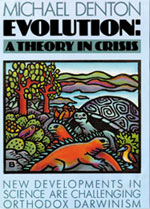Darwinists Believe the Unbelievable
As we said in the last chapter, evolution is a theory that flies in the face of logic and common sense. Science has invalidated it. But because it supplies atheist philosophies with a supposedly scientific foundation, it has found support among many scientists, and its propaganda has influenced masses of people. This influence, which we characterize as a "spell," is so powerful that even intelligent, informed people have not been able to escape it. Many have come to accept incredibly illogical propositions that even a child could see through—and they defend these propositions with great fervor.
Philip E. Johnson and the cover of his book criticizing the theory of evolution.
One noted critic of the theory of evolution is Phillip E. Johnson. In his book Defeating Darwinism by Opening Minds, he says that evolutionists accept Darwin's propositions without having thought about them beforehand and have never considered what they mean.
My experience speaking and debating on this topic at universities has taught me that scientists, and professors in general, are often confused about evolution. They may know a lot of details, but they don't understand the basics. The professors typically think that evolution from molecule to man is a single process that can be illustrated by dog breeding or finch-beak variations, that fossil evidence confirms the Darwinian process of step-by-step change, that monkeys can type Hamlet if they are aided by a mechanism akin to natural selection…3
Johnson's words outline the confused, conflicted spiritual state in which evolutionists find themselves. And in his book, Evolution: A Theory in Crisis, noted Australian molecular biologist Michael Denton draws attention to the same point. He describes the Darwinists' strange view that the extremely complex structures of living things came to be through chance occurrences:
To the skeptic, the proposition that the genetic programmes of higher organisms, consisting of something close to a thousand million bits of information, equivalent to the sequence of letters in a small library of 1,000 volumes, containing in encoded form countless thousands of intricate algorithms controlling, specifying, and ordering the growth and development of billions and billions of cells into the form of a complex organism, were composed by a purely random process is simply an affront to reason. But to the Darwinist, the idea is accepted without a ripple of doubt—the paradigm takes precedence!4
Michael Denton and his book, Evolution: A Theory in Crisis.
To demonstrate Darwinism's mind-boggling and powerful hold on people and how dangerous it is for humanity, this chapter examines some of the Darwinists' preposterous claims that no one of ordinary intelligence could ever believe. We'll briefly explain how these claims are invalid from a scientific point of view. (For details on the technical subjects in this chapter, see Harun Yahya's Darwinism Refuted: How the Theory of Evolution Breaks Down in the Light of Modern Science, Goodword Books, 2003).
Evolutionists Believe that Lifeless, Unconscious Atoms Came Together by Themselves to Form Living, Conscious Human Beings
The most absurd of evolutionists' beliefs is that lifeless matter, on its own accord, formed living things by a series of acts of blind chance. They assert that the material required for living beings came together by a series of accidents, in just the right proportions and under ideal conditions, to form life's first building blocks—amino acids. These amino acids, supposedly formed by chance and without suffering any damage under the harsh conditions of the primordial Earth, somehow encountered other amino acids, formed by chance like themselves. (Scientists unanimously agree that no living organism could survive under the conditions thought to have existed millions of years ago.) But this encounter was not random: Every amino acid bonded to others in a definite sequence and with no errors. In this process—whose chance of occurrence is less than one in one trillion times one trillion times one trillion times one trillion times one trillion, proteins were formed. (For further information, please see the chapter "Molecular Biology and the Origin of Life" in Darwinism Refuted:How the Theory of Evolution Breaks Down in the Light of Modern Science by Harun Yahya, Goodword Books, 2003)
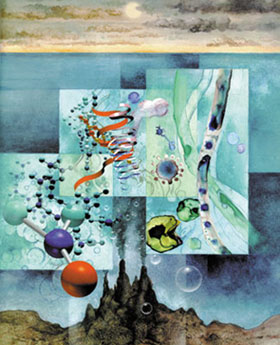
Facing page: a representation of the evolutionists' definition of primitive atmosphere. Right: a chart depicting the amino acids and other elements supposedly formed in that primitive atmosphere. No doubt that the scenario that the materials seen here came together to produce a living cell is totally irrational and contrary to science.
But the evolutionary scenario doesn't end here: Chance alone was not sufficient for life to occur. In order for cells to form, appropriate proteins had to wait for millions of years (while remaining undamaged and unaffected by sunlight's ultraviolet rays, heat and cold and lightning) until the other requisite proteins came along. And when these proteins finally came together, they formed cells—one of the most complex structures in the world today.
Evolutionists extend this scenario to the formation of human beings. But all of the separate stages described above have been proven wrong by scientific discoveries, demonstrating that the events they portray could never have happened. In later pages, we will outline the impossibility of cells and proteins coming about by chance. We shall focus especially on evolutionists' illogical claim that lifeless matter developed into living things on its own.
In fact, the idea that life sprang spontaneously from lifeless matter dates back to the Middle Ages. When people saw living creatures suddenly gathered together in one place—maggots in rotting meat, for example— they supposed they had arisen through the process now known as spontaneous generation. People believed that geese were born from trees, lambs from watermelons, and that frogs formed in rain clouds and fell into ponds on the ground.5

Early views on the origin of life included one that suggested sheep arose from a plant. Obviously, this misconception isn't vastly different from modern evolutionist ideas.
In the 1600s, a Belgian scientist by the name of Jan Van Helmont decided to test the theory of spontaneous generation. He sprinkled wheat on a dirty shirt and waited for creatures to form on it. Three weeks later, Van Helmont saw several mice feeding on the grains. From his observations, he concluded that the combination of a dirty shirt and wheat gives birth to mice.
A German scientist, Athanasius Kircher, came to the same conclusion by another route. He poured honey over a number of dead flies and shortly afterward, observed other flies swarming over the dead ones. Whereupon Kircher believed that he had proven that dead flies and honey produce living flies!
But experiments by the Italian scientist Francesco Redi and, after him, the French scientist Louis Pasteur showed that mice did not arise from dirty shirts, and that flies are not generated from a mixture of honey and fly corpses. These living creatures did not arise from lifeless matter, but arrived from somewhere else. For example, living flies are attracted by the honey on the corpses of other flies and perhaps even lay their eggs there. Shortly afterwards, both living flies and maggots are suddenly observed. That is, life never arose from something lifeless, but from life itself. This law—that life arises only from life—is one of the basic foundations of modern biology.

Ortaçağ'da insanların sahip olduğu bilim anlayışına göre cansız maddelerden canlıların oluşabilecekleri zannediliyordu. Örneğin açıkta kalan etlerin üzerinde oluşan kurtları n kendi kendilerine meydana geldikleri sanılıyordu. Ancak önce F. Redi'nin ve daha sonra L. Pasteur'ün buluşları bu yanlış inancı yıktı. Yukarıdaki resimlerde F. Redi'nin bu konu ile ilgili yaptığı deneyler görülmektedir. Tüm bu bilimsel gerçeklere rağmen, Ortaçağ'a ait batıl bir inançtan başka bir şey olmayan bu iddia günümüzde evrimciler tarafından hala (farklı şekillerde olsa da) savunulmaktadır.
That such incredibly strange ideas were accepted at all may seem excusable, considering the ignorance of that period's scientists and the limitations of their instruments and experiments. But it's highly surprising that today's evolutionists still defend such ideas, even though science and technology have advanced to their present state— and after several experiments and observations have proven that life cannot develop from lifeless matter.
For years, evolutionists have worked in their most advanced laboratories, trying to prove these unreasonable ideas by producing even a single cell from assemblages of lifeless material. They have conducted countless experiments using the best technology and under the supervision of experienced scientists, but have never been successful. It is absurd to claim that an occurrence that cannot be conducted in even a controlled environment could have occurred randomly, unconsciously, in a primeval world, under conditions inimical to life.
Interestingly, evolutionists know quite well that life cannot come from lifeless matter. But though they often admit being aware of this truth, they continue to trust in happenstance as if it this were not the basis of the theory of evolution.
Sir Fred Hoyle, the noted English astronomer, gives an example to demonstrate that matter cannot produce life by itself:
If there were a basic principle of matter which somehow drove organic systems toward life, its existence should easily be demonstrable in the laboratory. One could, for instance, take a swimming bath to represent the primordial soup. Fill it with any chemicals of a non-biological nature you please. Pump any gases over it, or through it, you please, and shine any kind of radiation on it that takes your fancy. Let the experiment proceed for a year and see how many of those 2,000 enzymes [proteins produced by living cells] have appeared in the bath. I will give the answer, and so save the time and trouble and expense of actually doing the experiment. You would find nothing at all, except possibly for a tarry sludge composed of amino acids and other simple organic chemicals.6
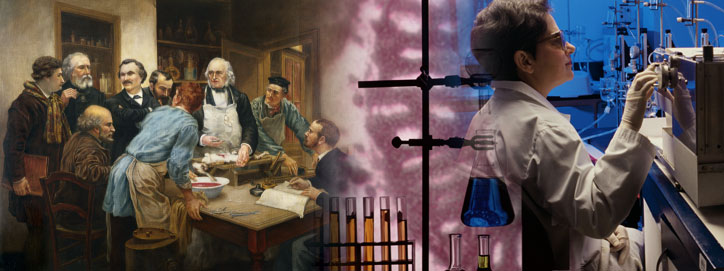
Facing page: Seventeenth-century scientists at work. During that period, most of the claims and theories put forward were far from scientific. Considering their lack of information, scientists of the time may be excused for their strange claims. But it is hardly excusable for today's people to be still making claims like those put forward during the Middle Ages. Evolutionists are among those who make such claims, whose invalidity has been proven in today's laboratories..
Andrew Scott, an evolutionist biologist, also admits that life cannot come from lifeless matter:
Take some matter, heat while stirring and wait. That is the modern version of Genesis. The "fundamental" forces of gravity, electromagnetism and the strong and weak nuclear forces are presumed to have done the rest . . . But how much of this neat tale is firmly established, and how much remains hopeful speculation? In truth, the mechanism of almost every major step, from chemical precursors up to the first recognizable cells, is the subject of either controversy or complete bewilderment.7
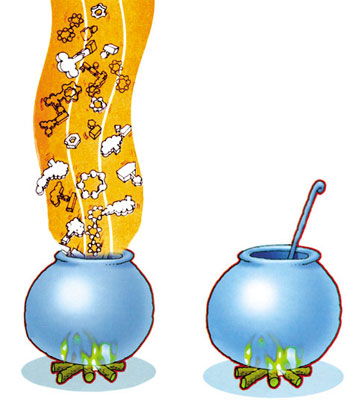
If every element that evolutionists think necessary for life were mixed in a pot like the one on the left, and if it were heated, subjected to electric current, and frozen—in short, if the pot was subjected to every procedure that evolutionist professors deem essential and left to stand for millions, even trillions of years, no living cell would be formed, let alone any living creature.
As pointed out earlier, evolutionists do know this, but continue to assert that life was formed from the chance combination of lifeless matter. Like a sorcerer who combines some materials together and tries to cast a spell with a few magic words, so evolutionists believe that life was formed in a primordial soup existing in the world's earliest ages.
But combine atoms like phosphorus, potassium, magnesium, oxygen, iron and carbon, which are required for life, and all you'll get is a lifeless mass. Nevertheless, evolutionists claim that this mass of atoms came together and organized itself, with each one forming bonds with the others in just the right proportions, in the proper place, and under the right conditions. Evolutionists claim that this organizational process resulted in a seeing, sensate, speaking, feeling, thinking, loving, compassionate human being who could smile, feel pleasure, pain and sorrow, have fun, laugh and feel excitement. This being had a sense of musical rhythm, prepared delicious meals, founded civilizations and could conduct scientific experiments!
Surely there is no difference between this story told by evolutionists and a sorcerer's tale.
Like Pagan Tribes, Evolutionists Make Nature into a Allah

Nature is a comprised of air, rocks, soil and water. It is not possible for this entity to produce a living organism, although evolutionists attribute many such claims to "Nature" in their imagined fairytales.
Another of the evolutionists' absurd suppositions is that nature possesses a creative power. They believe this strange proposition and mobilize all their forces in trying to get others to believe it too. For example, in television documentaries, books, magazines or newspapers, you must have seen such comments as, "This is a gift of nature to human beings," "a miracle of Mother Nature," "Nature has given beavers the ability to construct wonderful dams." But who is this Mother Nature that evolutionists put forward as a creator? Like pagans, evolutionists have divinized the concept of Mother Nature. "She" is a combination of trees, rivers, flowers, rocks, stones, soil, fish, cats, dogs—in short, everything in the natural world, animate and inanimate, that has no awareness or creative power of its own.
Then how can it be that these creatures, lacking even the ability to think, can come together and achieve things that require a great deal of conscious awareness? Surely, this would be impossible. All the signs of consciousness and awareness we see around us are creations of the infinite knowledge of Allah.
In the language of sociology, evolutionists' accepted belief in nature is called "animism." Animism is the attribution of spirit and consciousness to inanimate things in nature; and the animist beliefs found in some uncivilized tribes are products of a primitive mentality. Today, you can find animist ideas in cartoons and children's stories. Evolutionists' scenarios and their belief in Mother Nature is no different from believing in a cartoon hero, or a talking tree, a sad river, or a mountain fighting to protect good people from evil in the forest.
Natural Selection: Assistant of the Imaginary "Mother Nature"
Natural selection is evolutionists' favorite mechanism, to which they most frequently attribute creative power. This actually is a process that can be observed in the natural world among living things. But it certainly cannot advance the development of any living thing, much less create a new species, as evolutionists imagine it can.
This natural process was known long before Darwin, but he was the first to assert that it had "creative power." His theory is founded on his belief that the mechanism of natural selection has the power to fuel evolution. But natural selection is based on the premise that living things can continue to survive only if they conform with the natural conditions in which they find themselves. Those individuals not equipped with attributes that ensure harmony with their environment will perish. In other words, natural selection has no power to cause or direct evolution.
One example can illustrate this point. Suppose that two dogs live in the same geographical area. One has long hair, and the other's is comparatively short. If the temperature in their area should fall significantly as a result of ecological change, the longer-haired dog could better resist the cold than the shorter-haired one. In this situation, the long-haired dog has the greater advantage; it would be healthier, live longer and thus, be able to sire more puppies. Within a short time, the number of short-haired dogs would noticeably decrease; they would either migrate to a warmer climate, or their strain would die out. So as a result, longer-haired dogs would be "naturally" selected and enjoy the advantage.
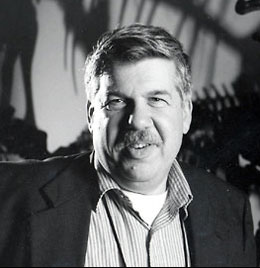 The late evolutionist author Stephen Jay Gould.
The late evolutionist author Stephen Jay Gould. But notice that no new species of dog appeared during this process. Natural selection merely chose between two different already existing breeds of dog. Long-haired dogs did not suddenly come into existence by natural selection, at a time when long-haired dogs did not already exist. It is absolutely impossible that these dogs could evolve into an entirely new species with the passage of time.
In short, natural selection cannot produce new species or new characteristics; it only "selects" from among the attributes of creatures that already exist. And because no new species or characteristic is ever produced, we cannot say that any "evolution" occurs. In other words, natural selection by itself, does not cause evolution. Nevertheless, evolutionists use natural selection to pull the wool over people's eyes, resorting to illusions to distort the facts. They credit natural selection with a much greater effectiveness than it actually exhibits. They believe that natural selection not only gets rid of the weak, but also creates countless new living species. It is accurate to say that evolutionists want to believe in this process because they've nothing else to rely on. Darwinists' hopes and aspirations play a major role here; they are described by one of the best known evolutionist paleontologists—the late Stephen Jay Gould:
The essence of Darwinism lies in a single phrase: natural selection is the creative force of evolutionary change. No one denies that selection will play a negative role in eliminating the unfit. Darwinian theories require that it create the fit as well.8
But Darwinists have been unable to prove their aspirations, because not one single example has ever been observed of natural selection causing new life forms to evolve. Colin Patterson, a noted English evolutionist and paleontologist, admits as such:
No one has ever produced a species by mechanisms of natural selection. No one has ever got near it and most of the current argument in neo-Darwinism is about this question.9
Surprisingly, even though Darwinists know that natural selection cannot have any creative powers, they continue to believe it. (Just like the bewitched man we described in our introduction, who believes he is getting wet on a sunny day.) Modern evolutionists admit that a mechanism like natural selection removes only weak individuals; it cannot create a complex creature like a human being with his superior qualities, capable of building entire civilizations. But interestingly, such admissions do not change what they believe. It is plain to see that evolutionary theory is in crisis; they witness this for themselves, but won't give up their obsessive preconception that human beings came into being through a process of evolution. Under the weight of this contradiction, anthropologist J. Hawkes states:
I find it difficult to believe that the extravagant glories of birds, fish, flowers and other living forms were produced solely by natural selection;I find it incredible that human consciousness was such a product. How can man's brain, the instrument which created all the riches of civilization, which served Socrates, Shakespeare, Rembrandt, and Einstein, have been brought into being by a struggle for survival among hunters of wild game in the Pleistocene wilderness?10
Hawkes' words underscore a very important point. No matter how evolutionists may not want to believe it, no intelligent human being or any other living creature with its amazing qualities could ever have arisen by the mechanism of chance. Similarly, Cemal Yildirim, a leading evolutionist in Turkey, admits, despite his loyalty to the theory, that it is very difficult to believe that natural selection has any creative force. As he writes:
A third and more important criticism is directed at natural selection as an adequate explanatory principle. Living things at all stages of life, from amoebae up through human beings, exhibit an extraordinary order, and a teleological [purpose-oriented] tendency that do not allow any physical and chemical analysis. The mechanical mechanism of chance, or natural selection is unlikely to explain this. Take the example of human eye. Could an organ, with structure and functions of such complexity, delicacy and perfection, have been formed mechanically, without the purposeful involvement of any creative power? Could human being, who form entire civilizations along with works of art, philosophy and science, have evolved through natural selection? Can we explain the love a mother feels for her young through a "blind" mechanism embracing no spiritual element whatsoever? No doubt, biologists (let alone Darwinists) find it hard to offer satisfactory answers to such questions.11
Despite all this, evolutionists keep on believing that nature and certain mechanisms within it, such as natural selection, can create a sentient human being who can make discoveries, establish nations, and produce works of art. They truly deceive themselves by expecting that one day, science will support their beliefs.
These world-renowned scientists, with their white lab coats and serious expressions, appear cultured and educated. But to see what they really believe, to understand their view of life, we have to take a broad look at these subjects. They may well be intelligent and well-trained, but they believe stories and legends reminiscent of Greek mythology that even children would mistrust.
Evolutionists Believe that Mutations —Deteriorations and Alterations in DNA— Can Produce New Species

Ever since the Austrian priest and botanist Gregor Mendel discovered the laws of genetics, evolutionists have come up against a definite impasse.
As we've mentioned, Darwin believed that natural selection is the chief mechanism in the process of evolution. But once Mendel's laws of genetic inheritance were accepted, evolutionists saw that natural selection didn't sufficiently explain the origins of life. They therefore added to their evolutionary mechanisms the concept of mutations. This new evolutionist model, known as Neo-Darwinism, proposed that evolution came about through the two-fold operation of natural selection and mutation. However, claiming that mutation can cause species to develop into new ones is no more scientific than the claims for natural selection.
Mutations arise from replacements and interruptions that occur due to chemical effects and radiation on the DNA molecule, located in the nucleus of living cells and which contains all the genetic information relevant to an organism. DNA information is formed by the ordered sequence of four nucleotides known by the letters A, T, C and G. The least error in the sequence of these nucleotides will ruin a given structure completely. For example, if a single letter were displaced in a 46-volume encyclopedia (whose contents would correspond to the information contained in DNA), no reader would care and probably not even notice. But the displacement of only one "letter" at any point in a DNA molecule—for example, at the 2,435,268th link of the DNA chain—could cause serious consequences for a human being.
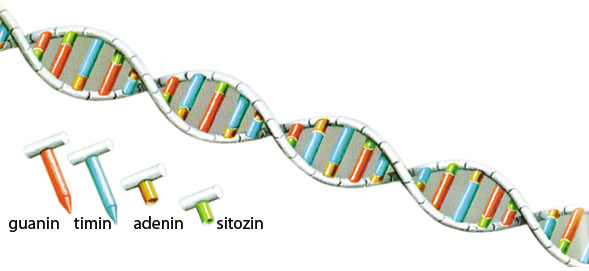
DNA molecules carry all the genetic information a living creature needs to develop. It is evident fact that such perfection cannot be attributed, as evolutionists do, to the operations of chance. Allah has encoded this information into living cells.
As just one example, childhood leukemia is caused by the wrong arrangement in one of the letters in the DNA. As a result of the atomic bomb dropped on Hiroshima and the radiation leak in Chernobyl, children were born handicapped or developed leukemia because of the dangerous effects of mutations in their bodies. Mutations as a result of radiation or chemical reactions cause one of these billions of letters to change places in the DNA chain with another, or to disappear completely. So, living creatures can suffer damage as a result of the least alteration in this arrangement. Throughout the years, many laboratory experiments have shown beyond doubt the damage that mutations can wreak on living creatures.
B. G. Ranganathan, an American geneticist, describes the dangerous effects of mutation:
First, genuine mutations are very rare in nature. Secondly, most mutations are harmful since they are random, rather than orderly changes in the structure of genes; any random change in a highly ordered system will be for the worse, not for the better. For example, if an earthquake were to shake a highly ordered structure such as a building, there would be a random change in the framework of the building which, in all probability, would not be an improvement.12
The noted evolutionist, Pierre Paul Grassé, admits that mutation cannot cause any development in a living creature or change it into another species. He says that to believe such a thing is pure fantasy:
The opportune appearance of mutations permitting animals and plants to meet their needs seems hard to believe. Yet the Darwinian theory is even more demanding: A single plant, a single animal would require thousands and thousands of lucky, appropriate events. Thus, miracles would become the rule: events with an infinitesimal probability could not fail to occur… There is no law against daydreaming, but science must not indulge in it.13

Some of the handicapped children born after Chernobyl. Evolutionists claim that mutation is a driving force in the evolution of living creatures, but these photographs are enough to show its harmful effects in human beings.
James F. Crow is professor emeritus of genetics and zoology at the University of Wisconsin and an expert in the field of radiation and mutation. He prepared a report that compared mutations that randomly target DNA to the random alteration of connections in a television set, showing plainly that random changes don't improve the quality of the picture on a television screen.14
From this, clearly, the evolutionists' claim that mutations cause species to develop and turn into other species is like believing that, if a person took a hammer and started chopping randomly at a computer, the computer would develop into a more advanced version. Indeed, making such a claim is highly unreasonable. Evolutionists speak of stranger and more illogical things than the man who assaults his computer with a hammer in the hopes of developing a new one. But in spite of this, many people believe them. Sometimes ignorance lies at the bottom of this naiveté, but more often, the effect of the spell of Darwinism is to blame. As we shall see in the following chapters, because of the evolutionists' various inculcation methods, people believe most of their claims at face value, ignoring how impossible and unscientific they are.
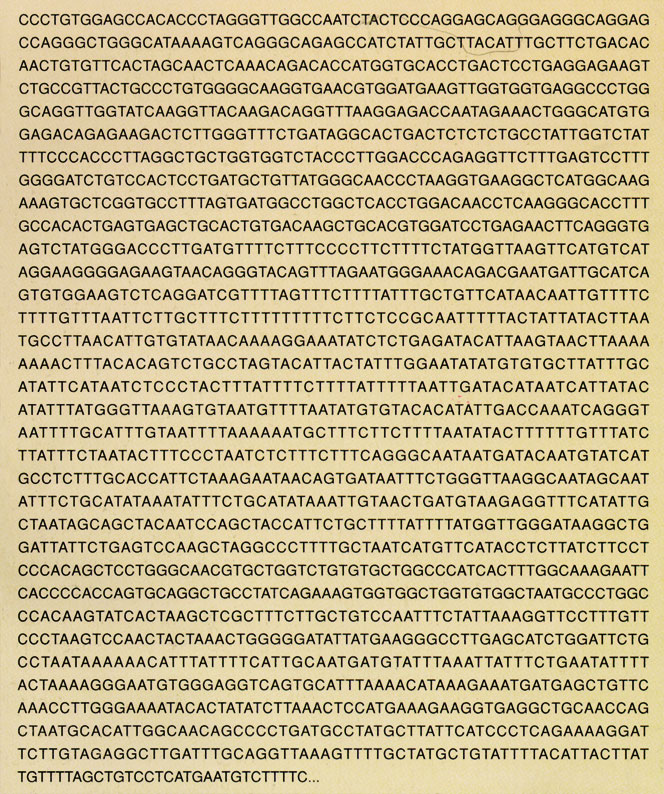
To dramatize the damage that mutation—either stoppages or changes in location in genetic information—can wreak on an organism, the following example may be instructive. Above is the DNA code of the Beta-globin gene, which forms a part of the hemoglobin gene carrying oxygen through the blood. The codes are read from left to right, as in an English text. If just one of the elements in this code is wrong, the function of the resulting protein will be completely vitiated. Clearly, any random interference will ruin such a structure. Let's imagine that the letters in the above illustration formed a meaningful text. If we remove any letter at random or change its location, we will not be able to improve the text. The same applies to mutations, which cannot produce evolutionary "development" through this kind of negative influence.
The Myth that Proteins, the Building Blocks of Life, Were Produced by Blind Chance
Life—from the proteins, building blocks of life, up to the human body—is based on countless delicate balances. Evolutionists reject the idea that living things were created by Allah, so when they are asked how all these balances can be established and perpetuated without the existence of any consciousness, they reply that it is only the result of chance. However, so delicate and so numerous are these balances that it goes contrary to common sense to assert that they were formed by chance. Can even one of the millions of fundamental elements of life (for example, proteins, the building blocks of cells) be the product of chance? The probability is nil.
In this light, we see once more how evolutionists can believe the impossible.
First, we will describe briefly what proteins are. A great part of what makes up our bodies is proteins, but of several different kinds. For example, the protein that changes consumed sugar into energy is called hexokinase. Skin is formed by great amounts of a protein called collagen. When light strikes the retina in our eye, it first reacts with a protein called rhodopsin. Proteins have many different functions in the body, and each one does only its own work. Rhodopsin, for example, doesn't form skin, and collagen is not sensitive to light. Therefore, any single cell contains thousands of proteins responsible for carrying out the activities that occur within that cell.
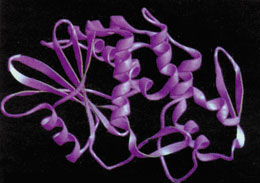
Right: the complex, three-dimensional structure of a protein.
Protein, bir molekül zinciridir. Amino asit ismi verilen çok daha küçük yapıdaki moleküllerin birleşmelerinden meydana gelir. Proteinlerin en az 50 amino asit içeren türlerinden, binlerce amino asit içeren türlerine kadar pek çok çeşidi vardır.
Any protein is a string of molecules, constructed out of the combination of much smaller molecules called amino acids. There are many kinds of proteins, from those containing only 50 amino acids to others containing thousands.
Here, we must be careful to notice that in the production of proteins, amino acids do not organize themselves randomly. On the contrary, each protein has a specific sequence of amino acids, and if even one amino acid should be out of place, the protein becomes useless.
We can compare proteins to a written text: If an amino acid is a letter, a protein is a paragraph composed of a few hundred letters. We can compose comprehensible sentences by arranging 29 letters side by side; similarly, if we combine 20 amino acids in different sequences, we'll form different proteins. But one absolute requirement is that the arrangement is done consciously. To produce a written text with real meaning, the letters of which the text is composed must be consciously selected and arranged.
A basic experiment will illustrate this. Sit at a computer, close your eyes and press the keys on the keyboard two hundred times at random. When you open your eyes, you will see you have produced an incomprehensible disorder of letters, perhaps something like this:
"EmakuekkmukeaaeHEnumugottteczug48ugieuauemzuyueaitfgueaulllllllgipufgiofgiutlmuttttd3n4olguxqmktuu glu;mntf3h8ieuueafgohnkfgido039meuueubomkuhukhununiuk0gi9orrrfgueimcikhagnro89f7469rkahK;Fi>zcgo8 "
In this way, you can never generate a short phrase, much less a sentence, that has any meaning. You may repeat the experiment a million times, but the results will be always the same. You may continue to press the keys for billions of years, but all you will get is trillions of meaningless pages. You will never compose a comprehensible paragraph. Just as no understandable text can be generated in this way, so no string of proteins can be formed by a random arrangement of amino acids. But evolutionists maintain that proteins did come into being by a random combination of amino acids. This is as absurd as claiming that comprehensible paragraphs can be composed by pressing a keyboard at random.
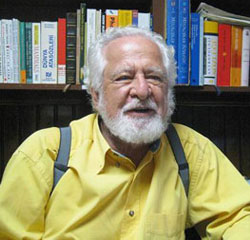
The evolutionist professor Ali Demirsoy (left) is so deeply under the Darwinist spell that instead of accepting evident proofs for the existence of Allah, he believes that a monkey could write a history of humanity.
Actually, the production of proteins is far more complicated than this illustration suggests. A written text is two-dimensional, whereas amino acids are formed in a three-dimensional space. They are not formed in a straight line like the letters in a word; amino acids bond with each other at different points and form an entire three-dimensional structure—making it all the more impossible that proteins could have "evolved" by any chance arrangement.
In this matter, evolutionist scientists make some interesting explanations and admissions. Professor Ali Demirsoy, one of Turkey's leading evolutionists, admits that cytochrome-C, just one of the proteins needed for the formation of life, couldn't possibly have been produced by chance:
The likely probability of the formation of a cytochrome-C sequence is zero. That is, if life requires a certain sequence to arise, this probability is likely to be realized only once in the entire universe. To accept the alternative—that some metaphysical powers beyond our definition must have effected its formation—isn't appropriate to the goals of science. Therefore, we have to look into the first hypothesis.15
A few lines later, Demirsoy admits this first possibility because it is more "appropriate to the goals of science"—but admits that it is unreasonable:
The probability of the chance formation of Cytochrome-C, an essential protein for life, is as unlikely as the possibility of a monkey writing the history of humanity on a typewriter without making any mistakes.16

The evolutionist professor Ali Demirsoy (left) is so deeply under the Darwinist spell that instead of accepting evident proofs for the existence of Allah, he believes that a monkey could write a history of humanity..
From the foregoing, we can plainly see how proteins and enzymes cannot have been produced by chance; and this proves that living things were created by Allah. But those who have made evolution their creed find this fact unacceptable from the point of view of their own scientific goals. Therefore, they prefer to accept the preposterous alternative that a monkey could sit down at a keyboard and write the history of humanity without a single error.
The fact of Creation is self-evident, even in the formation of a single protein. Anyone who looks at the wonders of life with common sense and honesty will easily see this. The reason why there are still so many atheist scientists, however, is because they are devoted to the theory of evolution as if it were a religion. No matter what proofs they see, they have conditioned themselves not to believe in the existence of a Creator.
Astronomer Sir Fred Hoyle, himself an evolutionist, explains why evolutionists believe in chance:
Indeed, such a theory [that life was assembled by an intelligence] is so obvious that one wonders why it is not widely accepted as being self-evident. The reasons are psychological rather than scientific.17
The psychological explanation, or spell, that Fred Hoyle gives here is actually the subject of this book. By preventing people from thinking, questioning, considering and seeing the truth, the spell of Darwinism oppresses their minds. And those under its influence can believe myths that are totally contradictory to science.
They Believe That a Series of Chance Events can Form a Data Bank as Complex as DNA
In the nucleus of every cell is a molecule that stores the code of all information pertinent to the living thing that encloses it. When we take a look at DNA's order and complexity, we can better understand the absurdity of the evolutionists' talk about the chance formation of this molecule.
To better understand the immensity of the store of information contained in DNA, we need to make some comparisons. DNA is composed of four different nucleotides symbolized by the letters A, T, G and C; and these "letters," arranged in a certain sequence, encode the information relevant to that particular living creature.
In this aspect, DNA can be compared to a huge library: if someone were to write a book containing the information stored in one single DNA molecule, he would create a library holding 900 volumes of 500 pages each. In his book The Roots of Life, Dr. Mahlon B. Hoagland illustrates how much information the formation of a living thing requires: :
-
A bacterium, one of the simplest of living creatures, has about 2000 genes; each gene has about 1000 letters (links) in it. So the bacterium's DNAmust be at least 2 million letters in length.
-
A human being has over 500 times as many genes as a bacterium, so the DNAmust be at least 1 billion letters in length.
-
The bacterium's DNA would be equivalent to 20 average novels, each of 100,000 words, and the human's to 10,000 such novels!18

DNA is a data bank containing all the information relevant to a living creature. Our every aspect, from our outward appearance to our inner organs, is encoded in DNA.
The late Carl Sagan, one of the proponents of contemporary evolution, refers to the immensity of the store of information DNA contains:
The information content of a simple cell has been estimated at around 1012 bits, comparable to about a hundred million pages of the Encyclopedia Britannica.19
But we must also point out that Sagan, despite that fact that he has openly stated this important truth, still believes the impossible: that the DNA code has come into being through some completely random natural processes.
How large, then, is the DNA molecule that contains so much information?
Located in the nucleus of the cell, DNA has an extraordinarily long, thin structure. But despite its length, it has been folded—actually packed—into the nucleus. If we magnified a cell nucleus 100 times, it would be about the size of the head of a pin. Yet if we stretched out the DNA folded into this tiny nucleus and magnified it at the same scale, it would be about the size of a football field.20
By what power was so much information put into the DNA, and DNA into the nucleus of a cell?
And how? The answer evolutionists give to this question shows their blind allegiance to their theory. They claim that the billions of bits of information relevant to a living creature have been encoded in DNA by a chance evolutionary process; the DNA then put itself—by chance and by the same natural process—into the cell's nucleus. Think, for example, of the information bank of any airline company: It is primitive compared to DNA. Who would state that such an information bank, with all its letters and numbers, came into existence as the result of a chance occurrence? Could anyone who made such a claim be thinking clearly?
Complex Structure of DNA
Even evolutionists are aware that the complex structure of DNA (above) couldn't have come into being by chance. They often admit this, but because they are under the Darwinist spell, are unable to accept DNA as proof of Allah's artistry.
By what power was so much information put into the DNA, and DNA into the nucleus of a cell? And how? The answer evolutionists give to this question shows their blind allegiance to their theory. They claim that the billions of bits of information relevant to a living creature have been encoded in DNA by a chance evolutionary process; the DNA then put itself—by chance and by the same natural process—into the cell's nucleus. Think, for example, of the information bank of any airline company: It is primitive compared to DNA.
Who would state that such an information bank, with all its letters and numbers, came into existence as the result of a chance occurrence? Could anyone who made such a claim be thinking clearly?
The noted French zoologist, Pierre Grassé, is both a materialist and an evolutionist, and an outspoken authority on this matter. But he openly confesses that the Darwinist theory cannot explain the origins of life. He believes that one major fact renders the Darwinist explanation untenable: the information that goes into the formation of life. In his book, The Evolution of Living Organisms, Grassé writes:
Any living being possesses an enormous amount of "intelligence," very much more than is necessary to build the most magnificent of cathedrals. Today, this "intelligence" is called information, but it is still the same thing. It is not programmed as in a computer, but rather it is condensed on a molecular scale in the chromosomal DNA or in that of every other organelle in each cell. This "intelligence" is the sine qua non of life. Where does it come from?... This is a problem that concerns both biologists and philosophers, and, at present, science seems incapable of solving it...21
The implication from what Grassé writes is quite clear: Even some evolutionists are aware that DNA could not have been formed by chance. But being under the Darwinist spell, they reject these plain facts with open eyes. Most important of all, where does this great supply of information come from? What is its source? Lifeless, unconscious atoms cannot produce it. So, who produced the information in DNA? Such information can come only from a Being Who has knowledge, and no power in nature has the knowledge to produce information and put it to use. Only Allah has knowledge and power. The structure of DNA alone is enough to demonstrate that Allah has created everything from nothing with His endless knowledge and eternal power. In the Qur'an, He tells us that all knowledge belongs to Him:
Do you not know that Allah knows everything in heaven and Earth? That is in a Book. That is easy for Allah. (Surat al-Hajj:70)
They Believe that Such a Complex Organism as a Cell Could Be Produced by Chance
The theory of evolution maintains that life came into being through the chance assembly of one cell. This is even more absurd than saying that the world's first industry came from a factory that appeared by accident in the middle of a city and started up production—again by chance.

In Ernst Haeckel's time, primitive microscopes like the one pictured could provide information about only the outer surface of a cell. That claims based on this level of knowledge can still be supported in the scientific environment of the twenty-first century can be explained only by the Darwinist spell.
Such a scenario might have been somewhat convincing in Darwin's day, given the primitive level of science at the time. When he proposed his theory, microscopes could view a cell only as a black spot, and the scientific world knew nothing about its internal structure. For example, Ernst Haeckel believed that cells were simply "homogeneous globules of plasm;"22 that is, he knew nothing of their function or complex structure. Over the past century, however, the rapid development of technology made it possible to investigate all aspects of a cell's amazingly complex structure, which proved to be one of the twentieth century's most important discoveries. Today, it is understood that the cell is one of the most complex structures known.
As in a factory, a cell has various sections where different processes occur, with "workers" entrusted with different duties. Among these sections are power plants, factories that produce the enzymes and hormones necessary for life, a data bank storing information needed for all the products to be produced, complex transportation systems to move raw materials and finished products from one area to another, pipelines, advanced laboratories and refineries to break down imported raw materials into usable components and cell membranes that expertly control what material is taken in and sent out. These make up only one aspect of the cell's complex structure.
W. H. Thorpe, an evolutionist scientist, says that "The most elementary type of cell constitutes a 'mechanism' unimaginably more complex than any machine yet thought up, let alone constructed, by man."23
Another aspect of the structure of a cell makes the word "chance" meaningless. As we said before, all the functions of a cell occur in accordance with information encoded in the DNA, and this information is the evident result of a Higher Creation . This applies not only to DNA; all the organelles in a cell are the result of superior creation. In this regard, the words of American scientist John Morris are very enlightening:
But design in all living things is obvious. Even the single-celled organism is complex beyond the ability of scientists to understand, let alone duplicate. All of life is governed by the marvelously complex genetic code, which contains not only design and order, but what is equivalent to written information. This DNA code must not only be written correctly, the rest of the cell must be able to read it and follow its instructions, if the cell is to metabolize its food, carry out its myriad of enzyme reactions, and, especially, to reproduce. This code had to be present at the origin of life. How could it have written itself? And how could all the various organelles learn how to read and obey it?24
In his book Evolution: A Theory in Crisis, Professor Michael Denton explains this complexity with an example:
To grasp the reality of life as it has been revealed by molecular biology, we must magnify a cell a thousand million times until it is twenty kilometers in diameter and resembles a giant airship large enough to cover a great city like London or New York. What we would then see would be an object of unparalleled complexity and adaptive design. On the surface of the cell we would see millions of openings, like the port holes of a vast space ship, opening and closing to allow a continual stream of materials to flow in and out. If we were to enter one of these openings we would find ourselves in a world of supreme technology and bewildering complexity... Is it really credible that random processes could have constructed a reality, the smallest element of which—a functional protein or gene—is complex beyond our creative capacities, a reality which is the very antithesis of chance, which excels in every sense anything produced by the intelligence of man?25
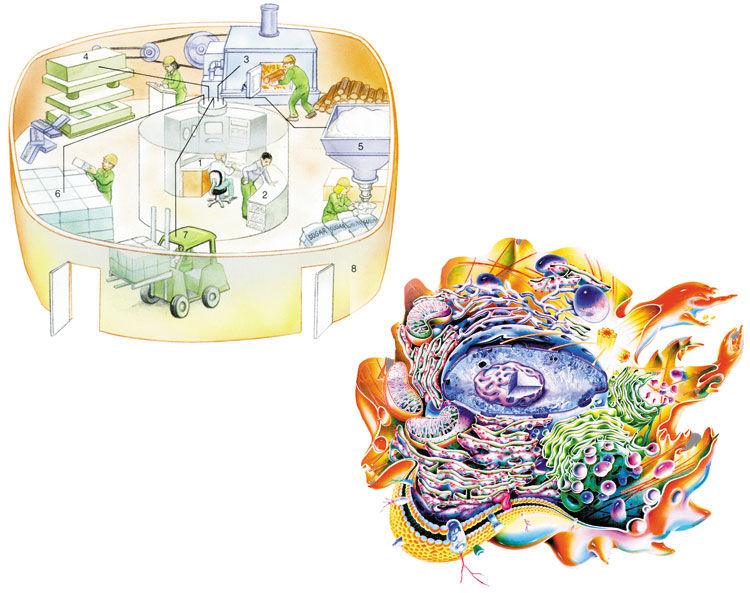
1- Nucleus
2- Chromosomes
3- Mitochondria
4- Ribosomes
5- Chloroplast
6- Vacuoles
7- Endoplasmic reticulum
8- Cell membrane
Left: The complex structure within a cell, compared to a factory. Below: an actual cell. Such a structure, in which every organelle has its own specific function, could not have come about by chance. These two illustrations are enough to illustrate why the structure of a cell has brought the theory of evolution to an impasse.

Complex Structure of DNA
These two pictures are sufficient to account for the reason why the theory of evolution had faced a dilemma in the face of the structure of the cell.
As Denton suggests, this mechanism "is the very antithesis of chance"; so then why do evolutionists insist it is the result of happenstance? When such a flawless model points so clearly to the reality of an incomparable creation, how can they believe in this kind of fairy tale?
Here, once again, we see the influence of Darwinism's spell. Those who believe in evolution are like the bewitched man we described at the outset of this book who insisted it was raining even though the sun was out;they defend an impossible idea—that cells came to be by chance. And, despite the fact that they can find no proof for their claims, they don't renounce their beliefs, but continue on in the hopes of finding it. Some scientists and researchers have even devoted their lives to this pursuit. That they spend their best efforts to verify
Darwinists Still Refuse to Accept that the Fossil Record Shows No Process of Evolution
Evolutionists' biggest problem is to explain how one species evolved from another. Mutations and natural selection, they claim, can explain the small and gradual changes that living creatures undergo, and that as a result of the accumulation of these changes, these creatures develop into other species. They believe that some of these small changes can be identified in creatures that must have lived in the past, which they call "transitional forms."
For example, they claim that fish evolved from invertebrate, or boneless sea creatures. In line with this claim, they maintain that an invertebrate such as the starfish gradually acquired fins and a backbone and underwent a great number of changes.
If such were the case, there must have been many transitional forms showing the gradual evolution between these two different groups. That is to say, there should have been several species with the characteristics of both fish and invertebrates. And if such creatures had really existed, why have we never found a single fossil belonging to them? So far, however, countless fossils have been unearthed, and many species have been discovered that lived in the past and later became extinct, but not one fossil of a "transitional form" to validate the evolutionists' claims has ever been discovered.
In this regard, it will be useful to examine the chart on the facing page, which clearly shows that evolution is not a valid theory.
What does a chart like this tell us? Every living class you see on Earth today—invertebrates, fish, reptiles, birds, mammals—has left a fossil record from the past. There are, however, also some imaginary creatures, which have of course left no fossil record. What if someone came to you and said, "There's no proof that these creatures ever lived, but I want to believe they could have. So, let's suppose they did live—and later, find the fossils later to prove it"? You would certainly find this illogical. But evolutionists have been making this claim for 150 years, as if they have been under a real enchantment.
However, modern creatures had the same characteristics in the past as they have today; they have undergone no evolutionary process. Evolutionists claim there must be "transitional forms" showing the evolution of one life form into another, but there is no evidence of this in the fossil record. And without any record of such forms, there is no proof that evolution has ever occurred.
Anyone of a logical, scientific bent and analytical ability will easily understand that evolution has never happened. But, in spite of the absence of scientific evidence in the fossil record, evolutionists continue to insist that it did occur.
| SPECIES | FOSSIL |
| | COUNTLESS SPECIMENS |
| Invertebrates | 
Fossil ammonite | 
Fossil starfish |
| | COUNTLESS SPECIMENS |
| Fish | 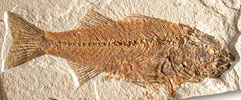
Fossil fish | 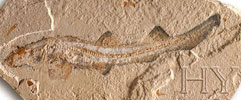
Fossil shark |
| | COUNTLESS SPECIMENS |
| Reptiles | 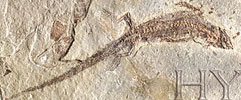
Fossil reptile | 
Fossil crocodile |
| | COUNTLESS SPECIMENS |
| Birds | 
Fossil bird |
| | COUNTLESS SPECIMENS |
| Mammals | 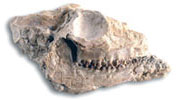
Fossil bat | 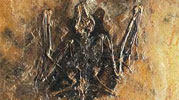
Fossil deer |
| | NO SPECIMENS |
| Half-invertebrate and half fish |  |
| | NO SPECIMENS |
| Half-fish and half reptile |  |
| | NO SPECIMENS |
| Half reptile and half mammal |  |
| | NO SPECIMENS |
| Half-reptile and half bird |  |
Bu tabloyu gören bilimsel düşünce yapısına ve analiz yeteneğine sahip, akıl ve mantık sahibi bir insan, evrimin hiçbir zaman gerçekleşmediğini kolaylıkla anlar. Ancak evrimciler fosil kayıtlarının ortaya koyduğu bu bilimsel gerçeklere rağmen evrim sürecinin gerçekleştiği konusundaki ısrarlarını sürdürürler.
Oysa Darwin bile kendi döneminde fosil kayıtlarının teorisini desteklemediğinin farkındaydı. Fakat gelecek yıllarda fosil kayıtlarının daha zenginleşeceğini ve ara geçiş formlarının da bulunacağını umuyordu. Ancak günümüzde evrimcilerin böyle bir ümitleri kalmamıştır. Çünkü kendilerinin de itiraf ettiği gibi fosil kayıtları son derece zengindir ve bize hayatın tarihini göstermek için yeterlidir. Lund Üniversitesi'nden İsveçli evrimci botanikçi Prof N. Heribert Nilsson fosil kayıtları konusunda şunları söyler:
My attempts to demonstrate evolution by an experiment carried on for more than 40 years have completely failed.... The fossil material is now so complete that it has been possible to construct new classes, and the lack of transitional series cannot be explained as being due to the scarcity of material. The deficiencies are real, they will never be filled.26
Despite the very extensive fossil record, Glasgow University paleontologist, Prof. T. Neville George, admits that the transitional forms that evolutionists have been seeking have not yet been found:
There is no need to apologize any longer for the poverty of the fossil record. In some ways it has become almost unmanageably rich, and discovery is outpacing integration… The fossil record nevertheless continues to be composed mainly of gaps.27
Although some evolutionists realize that intermediate forms have never been discovered at any period, still they refuse to abandon their theory. Instead, they resort to various methods of falsification. Taking great care not to break the Darwinist spell, they produce bogus proofs by extrapolating from existing fossils and making opinionated interpretations of them.
Some Evolutionists even Believe that a Bird Can Hatch from a Reptile's Egg
The fossil record has definitively shown that evolution never took place. But this hasn't interrupted the zeal of evolutionists, some of whom continue to imagine the existence of transitional forms as a way out. Others try to defend evolution with highly improbable explanations.
The fossil record has definitively shown that evolution never took place. But this hasn't interrupted the zeal of evolutionists, some of whom continue to imagine the existence of transitional forms as a way out. Others try to defend evolution with highly improbable explanations.
That is Allah, your Lord, the Truth, and what is there after truth except misguidance? So how have you been distracted? (Surah Yunus, 10:32)
In the 1930's, an evolutionist scientist by the name of Otto Schindewolf claimed that the first bird hatched from a reptile egg. This, he thought, explained the transition of reptiles into birds. According to his irrational claim, this kind of sudden change would leave no fossil traces, so the problem of having to come up with any proof was overcome. One would expect that such an embarrassing claim had to be covered up, but in later years, some evolutionists accepted it and even elaborated on it. In 1940, the Berkeley University geneticist Richard Goldschmidt announced his new theory:a megaevolution in which one life form suddenly emerged completely out of a different one. He called these suddenly emerging new creatures "hopeful monsters." With this theory, he showed his acceptance of Schindewolf's extreme example of the first bird hatching from a reptile egg.28

According to the "hopeful monster" theory, a feathered creature hatched from an egg laid by a reptile, and thus became the first bird. But the proponents of this theory give no proof or logical explanation whatsoever for this story; they simply accept it.
Let's assume that the first chapter of this impossible story actually took place. Let us accept the proposition that, one day and for no reason, a bird hatched out of a reptile's egg. Could it survive under such conditions? There would be no other birds around to feed it and look after its needs. But even supposing this did occur, could a bird that hatched by chance from a reptile egg become the ancestor of all subsequent generations of birds? For this to happen, for our story to continue, yet another such chance event has to take place: This first bird must find a mate also hatched suddenly by chance from another reptile egg. Otherwise, the "bird" characteristics would become recessive, and eventually, be bred out of existence by constant cross-breeding with pure reptiles. Only then they can mate and produce new birds. There is no difference between what we have described above and the fantastic events in a children's cartoon. And to believe such fantasy shows a serious breakdown in one's reasoning ability.
Actually, such faulty reasoning is the inheritance Charles Darwin left to modern evolutionists. Darwin claimed that in the course of time, bears that swam a great deal turned into whales—thus solving in a practical way, as far as he was concerned, the problem of how sea mammals first came into being. In his article entitled "Roadblocks to Whale Evolution," biologist Frank Sherwin writes:

Darwin was so far removed from scientific reality as to propose that bears that spent much of their time swimming eventually, over eons, develop into whales.
Indeed, one encounters many bizarre explanations for the origin of the species when such strange fiction grips biology. A popular contemporary "just so" story tells how land mammals ventured back into the ancient seas and became whales. The idea was first presented by Darwin in the first edition of his book, Origin of Species. The naturalist [i.e., Darwin] stated: "I can see no difficulty in a race of bears being rendered, by natural selection, more and more aquatic in their habits, with larger and larger mouths, till a creature was produced as monstrous as a whale." Interestingly, Darwin retracted this example in all later editions of his book.
This has not stopped later evolutionists. For example, the ancient ancestors of whales, writes the late Sir Gavin de Beer, ". . . had dentitions enabling them to feed on large animals, but some took to preying on fish and rapidly evolved teeth like sharks.... Next, some whales preyed on small cuttlefish and evolved a reduced dentition. Finally the whalebone whales, having taken to feeding on enormous numbers of small shrimps, also evolved rapidly."29
The only difference between Schindewolf and Goldschmidt on the one hand and Darwin on the other is that the first two say that a different species hatched suddenly from an egg, while the latter claimed that a bear who goes in and out of the water gradually turns into a whale. Although 150 years separates them, there's been no development or progress in their information or the logic with which they shape those facts.
Do you believe this theory has anything to do with science? Or if not, are these stories derived from Greek mythology or fairy tales? What is worrisome is that some scientists sincerely believe these evolutionist tales and think that they solve all objections to "evolution." These examples only show how deeply they are under Darwinism's spell.
Some Prominent Evolutionists Have Pinned their Last Hope on Creatures from Outer Space
Once some evolutionist scientists saw that it was impossible for life to form spontaneously, they created certain scenarios in order to keep their allegiance to the theory. This is actually one of the most noticeable effects of the Darwinist spell on them: They will easily believe any proposal, no matter how illogical, to explain a difficulty in the theory. But they vehemently reject the most evident proofs of Creation, just as if they were under a spell.
Just one example will show how harmful this spell's effect can be on a person. Francis Crick was one of the two scientists who discovered the structure of DNA during the 1950s. Certainly an important discovery in the history of science, this came after lengthy research and a great pooling of information and expertise. Crick won the Nobel Prize for his work.
In the course of his investigation of the cell, he was amazed by its internal structure and model. Even though he was a committed evolutionist, after witnessing the wonderful structure of DNA, he stated this scientific fact in one of his writings:
An honest man, armed with all the knowledge available to us now, could only state that, in some sense, the origin of life appears at the moment to be almost a miracle.30
Crick believed in evolution and, therefore, that life was the result of chance. But after seeing what made up the structure of a cell, he made the above statement. Evolutionists, however, accept no explanation apart from chance; if they did, they would have to acknowledge the existence of Allah. But when Crick saw the wonder and perfection of a cell, he was so impressed that he was forced to make this admission, even though it went against his ideology. He knew that the cell's creation couldn't be a matter of chance, but required a superior intelligence. And since he could not accept the existence of Allah, he claimed that creatures from outer space were responsible! Crick actually believed that extraterrestrial creatures brought the first DNA to Earth and caused life to begin here.
Actually, this same strange proposal was first made in 1908 by the Swedish chemist, Svante Arrhenius. He declared that the seeds of life could have come from another planet, by way of the pressure created by radiation. Despite the fact that this claim was found unscientific and unworthy of consideration, Crick persuaded people to believe it. In his book Life Itself, published in 1981, he said that creatures from another solar system brought the seeds necessary for life to lifeless planets and, thanks to their kind intervention, life began here.
Look carefully, and notice that this claim, put forward by evolutionists as an explanation for the origins of life, doesn't really explain anything. In this scenario, there is no answer to the question of how life firstappeared. Evolutionists like Crick say that creatures from outer space brought life to Earth, but in so saying, they simply beg the question of how these outer space creatures originated. This question cannot be answered by evolutionist logic! The only answer lies in accepting Allah as the Creator of all life, Himself uncreated and existing eternally. In other words, the only valid answer to this question is that Allah created all life.

The dark spell of Darwinism had such an influence on Francis Crick that, instead of accepting the existence of Allah, he chose to believe that life first began on our world from DNA brought here by space beings.
How could well-known scientists like Francis Crick believe in a story about creatures from outer space, such as you might see in a science-fiction film? Yet Crick's story is quite tenable next to another evolutionist thesis, according to which the first living cell appeared on Earth 3.7 million years ago—produced by biological engineers!
But how? The answer to this question is most interesting. Evolutionists who accept this thesis say that the first cell was designed by human beings from the future who boarded a spaceship and made a journey back through time.31
One does not need to be a genius to see how contrary this is. There is no answer to the question of how a generation of human beings might have come into existence if they had to create their own ancestors. This thesis is so obviously absurd that one wonders how evolutionists could even mention it. Yet the March 1994 issue of Scientific American, one of the most respected science magazines, does not hesitate to say of this theory:
Far from being a logical absurdity . . . the theoretical possibility of taking such an excursion into one's earlier life is an inescapable consequence of fundamental physical principles.32
Some materialist-minded people fall into contradictions that—for them—are unavoidable because although these people are clearly aware of the truth, they try to hide it. Allah reveals the following about the state that some materialists fall into:
By Heaven with its oscillating orbits, you certainly have differing beliefs. Averted from it is he who is averted. Damned will be the conjecturers: those who flounder in a glut of ignorance, (Surat adh-Dhariyat:7-11)
These people behave like that bewitched individual mentioned earlier. Because of the spell he was under, he thought sunny sky was cloudy and even claimed that it was raining. In order to reject the fact of Creation, they have recourse to imaginary space creatures or time-traveling science-fiction heroes, with not a shred of logical or scientific proof.
Professors who Believe that Running Dinosaurs Suddenly Started to Fly
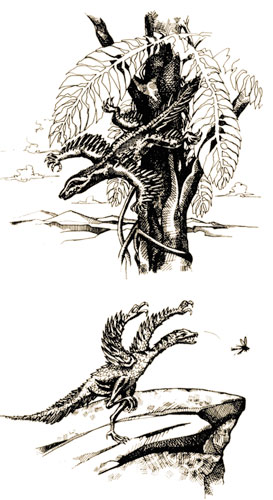
To explain how birds first came into existence, imaginative evolutionists proposed that reptiles climbed into trees and were forced to develop wings as they jumped from one branch to another. Their alternative solution to this question is that an imaginary running dinosaur grew wings to help it catch insects.
Ovolutionists ave to explain how every living species came to be—in short, which one evolved from which. One of the most difficult questions they strive to answer is how dinosaurs were suddenly able to fly. According to the evolutionist scenario, scaly, cold-blooded dinosaurs somehow grew wings one day, began to glide, and thus became birds. Of course, explaining how this occurred was left to the evolutionists with the most vivid imaginations. To understand the logic of those respected, serious-looking scientists, whose intelligence and knowledge you may have assumed was beyond your reach, you need only look at the scenarios they have devised about flying dinosaurs.
There are two evolutionist theories about how dinosaurs started to fly: the "arboreal" theory and the "cursorial" one. According to the first, the ancestors of birds were reptiles that lived in trees and whose forelimbs developed into wings over the course of time as they jumped from branch to branch. The second theory proposes that land-dwelling dinosaurs opened and closed their front legs while chasing insects and, as a result of this movement, their legs developed into wings that let the dinosaurs "take off." The author of this theory is John Ostrom, an evolutionist professor emeritus at Yale University's Department of Geology and Geophysics.
You may imagine that this kind of transformations could happen only in cartoons or fairy tales, but amazingly, very intelligent individuals who have become high-ranking professors in their particular disciplines have proposed similar scenarios. We can illustrate the logical deficiency of their ideas with another example: In an age before science had not developed, a number of people believed that sheep grew from a plant! Today, this is certainly nothing but superstition, and the claim that a creature grew wings from jumping from tree to tree or from chasing after flies is just as much of a superstition.
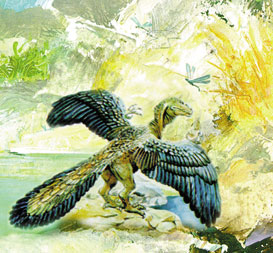
Moreover, the cursorial theory has one very important aspect that's good to keep in mind. It proposes that a dinosaur grew wings from running after insects. But an insect can fly perfectly well; so, where did it come from? If the origin of flight lies in a dinosaur's chasing a fly, what is the origin of flies? About this, evolutionists say nothing. A fly moves its wings between 500 and 1000 times a second and can suddenly maneuver in any direction it wants. Ask any evolutionist scientist how this ability could have come into existence by chance. But because there is nothing he could answer, he'll avoid giving an explanation. If this theory cannot even explain a tiny fly, why do scientists resort to fairytale scenarios to make much larger creatures take to the air? What makes them believe the unbelievable is surely the effect that the Darwinist spell has over them.
Trying to Explain Mammals' Production of Milk by the Development of Sweat Glands
As stated at the outset, the evolutionist scenario proposes that various creatures "evolved" into different creatures by the operation of pure chance. According to evolutionists, reptiles—for example—are the ancestors of birds and mammals. However, reptiles:
 |  |
| Given all the differences between reptiles and mammals, how did a reptile begin to regulate its body temperature by a perspiratory mechanism? Is it possible that it replaced its scales with fur or hair and started to secrete milk? In order for the theory of evolution to explain the origin of mammals, it must first provide scientific answers to these questions. |
Oysa sürüngenlerin;
- Are covered with scales,
- Are cold-blooded and
- Reproduce by laying eggs.
Mammals, on the other hand:
- Have hair on their bodies,
- Are warm-blooded, and
- Give birth to living young.
In short, between mammals and reptiles there is a great structural chasm that cannot be crossed. One chief difference is the milk produced by mammals. In order to claim that a reptile evolved into a mammal (if such a claim were possible), it is necessary to explain how any creature suddenly begins producing milk to nourish its young. See how an evolutionist invents a fairy tale to explain how a reptile suddenly began to produce milk:
Some of the reptiles in the colder regions began to develop a method of keeping their bodies warm. Their heat output increased when it was cold and their heat loss was cut down when scales became smaller and more pointed, and evolved into fur. Sweating was also an adaptation to regulate the body temperature, a device to cool the body when necessary by evaporation of water. But incidentally the young of these reptiles began to lick the sweat of the mother for nourishment. Certain sweat glands began to secrete a richer and richer secretion, which eventually became milk. Thus the young of these early mammals had a better start in life.33
The idea that a creature could get rich, well-balanced, milk-like nourishment by licking its mother's body might be accepted by the scientists of the Middle Ages or by listeners of a fairytale. But the sweating process is very complex and is needed to keep the temperature of the body stable. Reptiles do not sweat, and evolutionists have not been able to explain logically how it is that mammals do.
This and similar scenarios frequently appear in evolutionist texts, showing just how distant the theory of evolution is from science. What deserves attention here, however, is how any scientist can believe them. As Phillip Johnson stated in his book, Objections Sustained, it is clear that "For Darwinists, just being able to imagine the process is sufficient to confirm that something similar must have happened."34
They Believe that Complex Structures such as the Eye Came into Being in Gradual Stages
Evolutionists claim that all living beings and all their complex organs came into existence piecemeal, by slow, gradual evolutionary development. But, if we look at the structure and function of any organ in the human body alone, we see that it has been created by a Superior Power. Evolutionists, however, propose that even the most complex organs came to be by chance. In order to see their faulty logic, we will consider what they claim about the development of the eye.
Evolutionists claim that all living beings and all their complex organs came into existence piecemeal, by slow, gradual evolutionary development. But, if we look at the structure and function of any organ in the human body alone, we see that it has been created by a Superior Power. Evolutionists, however, propose that even the most complex organs came to be by chance. In order to see their faulty logic, we will consider what they claim about the development of the eye.
One of the body's most structurally complex organs, the eye is composed of about 40 different parts that form an irreducible complexity. In other words, the eye's structure cannot be simplified, because if only one of its 40 elements were missing, the eye would not be able to function.
Could such a complex organ have come to be by chance? The theory of evolution states that creatures existed before the eye was formed; these creatures were without sight and had no concept of vision. How could such a creature have developed an eye as the result of some random process? No creature could have even attempted to develop an eye for itself, if it did not know the concept of "seeing." Even if this creature did have such a wish, clearly it could not have formed an eye all by itself.
 Perfect and complex structure of the eye
Perfect and complex structure of the eye
The figure above illustrates the components of the eye revealing its complex structure. Evolutionists are so deeply under the influence of a spell as to propose that the eye's perfect and complex structure could have arisen by chance..
-
So, how could an eye be formed in a creature without any? What series of chance processes would be necessary for sucha development to occur?
-
First, could two cavities have been formed by chance in the skull to contain the eyes?
-
Then, could two globes filled with fluid to admit light have formed by chance within these two cavities?
-
Then, could two lenses have been formed by chance in front of this fluid to refract the light and focus it on the eye's interior wall?
-
Then, could the eye muscles have been formed spontaneously by chance so that the eye could turn in its socket?
-
Then, could the retina have been formedby chanceat the back of the eye in order to perceive light?
-
Then, could the nerves connecting the eye to the brain have come into existence by themselves, suddenly and by chance?
-
Then, could tear ducts protecting the eye have come into being by chance?
-
Then, could lids and lashes to protect the eye from dust and other foreign matter have been formed by chance?
Of course, not one of these things could occur by chance. Besides, according to the evolutionists' claim, the general stages we have outlined above must occur serially within one same living being. This is because according to evolutionists, the non-functional organs of the body will atrophy over time. But even if one part of the eye had been formed by chance (which is impossible), it would soon disappear again because it would have no use. In order for the eye to function, all its parts must exist at once, as a whole, and work together in concert. For example, if there was no film of tears, the cornea would dry and become opaque, causing the eye to lose its ability to see.
All evidence shows that the eye's creation is far too flawless to be explained away as a product of chance. The first eye that ever existed came into being perfectly and completely—that is, it was created. Although evolutionists are aware of it, they ignore this plain fact and choose to believe that the eye, and all other complex organs like it, came into being by a process of evolution.
This belief is the same as their asserting that a highly advanced camera found on the roadside assembled itself out of the random agglomeration of stones, soil, rain and glass. Obviously a camera, with the technology it contains, is a product of engineering; but the eye has qualities far superior to those found in a camera. So how could someone, knowing a camera is the product of design and intelligence, claim that the eye's superior attributes were formed by chance?
We see that this claim is absurd, of course. Charles Darwin himself may have been aware of the absurdity when he wrote,
To suppose that the eye with all its inimitable contrivances for adjusting the focus to different distances, for admitting different amounts of light, and for the correction of spherical and chromatic aberration, could have been formed by natural selection, seems, I freely confess, absurd in the highest degree…35
As Darwin himself admitted, claiming that natural selection can cause a new species to emerge is absurd in the highest degree.
They Believe that Apes Turned into Speaking, hinking and Decision-Making Humans
Of the evolutionists' claims, one of the most senseless is that an animal like an ape, lacking intelligence, reason, and judgment, lacking the ability to speak, could turn into a human being by the operation of chance.
- What unconscious natural mechanism could have given an animal the ability to think?
- What mechanism could have given human beings intelligence, and the ability to acquire knowledge and found civilizations?
- What power of nature could have taught an animal to produce masterpieces of painting and magnificent architecture that dazzle the eye with their use of colors, shapes, perspective, shade and light?
- What natural mechanism could have enabled an animal to make a light-bulb and discover the structure of an atom, the law of gravity and the inner workings of a cell?
- Or who could have endowed a monkey with the superior intelligence needed to invent a microscope, television or a computer?
- Could any force in nature give a monkey such spiritual qualities as the ability to draw conclusions from experiences, form feasible solutions, take pleasure, feel regret, act with forethought and feel proud or embarrassed?

It is surely unreasonable to believe that monkeys, created without the ability to think and make rational decisions in the way humans do, could—under any conditions—develop over time the superior talents required to invent technology.
Of course, no monkey can possess these qualities. Even if all the elements of nature were to combine, they couldn't manage to endow a monkey with spiritual qualities. In The Scars of Evolution, the evolutionist paleontologist Elaine Morgan admits the situation in which the theory of evolution finds itself, when confronted by these questions:
Four of the most outstanding mysteries about humans are:
- Why do they walk on two legs
- Why have they lost their fur?
- Why have they developed such large brains?
- Why did they learn to speak?
The orthodox answers to these questions are:
- "We do not yet know".
- "We do not yet know"
- "We do not yet know"
- "We do not yet know"
The list of questions could be considerably lengthened without affecting the monotony of the answers.36
Evolutionists have left these questions unanswered, because they realize their answers will do nothing to show that a superior creature like a human being is a product of chance. Even if the world were a quadrillion years old, no chance operations could create the human spirit. The Creator of the human spirit, as well as the heavens and the Earth and everything in between, is Allah, the Lord of all. Just pondering the human spirit shows how absurdly misguided are the evolutionists' tales of chance. (For more information on the "Scenario of Human Evolution," see Harun Yahya's The Evolution Deceit, 8th Edition, Taha Publishing, London, 2003)
The Dilemma in Which Evolutionists Find Themselves
Up to this point, we have seen that evolutionists hold absurd and unreasonable tenets that even people with normal intelligence and ordinary knowledge would not believe; moreover, they blindly accept theories that are contrary to science.
There may be two explanations why anyone could believe claims so strange and irrational. The first is lack of knowledge: Someone who has never considered evolution and knows very little about it, may at first be deceived by its scientific guise into accepting what he is told, especially if he has never examined or researched its claims. But when he is presented with the facts and allowed to consider them, this individual will easily see how absurd and impossible the theory of evolution really is. A short handbook or a two- to three-hour lecture will be enough to demonstrate the theory's invalidity. A person with normal intelligence will easily see the fact that evolution is nonsense. Therefore, ignorance is a deficiency that is easily disposed of.
As the result of a few years' work, many people's lack of knowledge about evolution has been remedied, and those with common sense have seen the real face of the theory of evolution. Today, even a primary student will be able to list proofs showing the invalidity of the theory and state how nonsensical it is.
The second reason, quite different from the first, concerns those who are not ignorant. Generally, these people are quite cultured and some are even experts in evolutionary topics relevant to such fields as biology, paleontology and microbiology. You may present them with as many clear proofs as you wish for the invalidity of evolution; you may give them examples to convince them of their unreasonableness. But they'll be determined not to abandon the theory, just like the man we mentioned at the beginning of this chapter who insisted that clouds in the sky were masses of cotton. For example, they show you a fossil as a proof of evolution, but you prove to them scientifically that it cannot be so. As if they had not heard you, they pull out this faulty evidence again and again as their most important proof for evolution.

One would have to lack any facility to understand and reason in order to believe that through coincidences, mud eventually gave rise to civilizations. Anyone capable of thinking and drawing appropriate conclusions can’t possibly be taken in by Darwinist errors.
If these people have the intelligence and knowledge to understand what is told to them, so, how can they still continue to put forward their claims? There is only one explanation: They don't want to be released from their spell. Because they persist in rejecting the existence of Allah, Darwinists continue to exert an influence over themselves and others. Of course, they may know that evolution cannot be true; but to deny it would mean accepting the existence of Allah. For this reason, they are careful to accept the spell wholeheartedly so that they don't have to examine the truth.
Avoiding seeing the signs of Allah, they cannot comprehend the truths. In the Qur'an, Allah describes their situation:
We created many of the jinn and mankind for Hell. They have hearts they do not understand with. They have eyes they do not see with. They have ears they do not hear with. Such people are like cattle. No, they are even further astray! They are the unaware. (Surat al-A'raf:179)
If you call them to guidance, they do not hear. You see them looking at you, yet they do not see. (Surat al-A'raf:198)
Darwinists today are trying to deny, conceal or ignore the truth in order to keep the myth alive. Yes this is a false road;by doing so they are deceiving and also belittling themselves. Darwinists, too, should learn from the verse revealed by Allah in the Qur'an:
Do not mix up truth with falsehood and knowingly hide the truth. (Surat al-Baqara: 42)
After seeing the truth, the correct thing to do is to cease resisting and turn towards it. Hitherto, a person may have believed in the myth of evolution out of a lack of information, or the propaganda to which he has been subjected. If that person is sincere, however, he will research and find the truth and abide by it, rather than following deceptions that will humiliate him in this world and the next. It must not be forgotten that sincerity and honesty will be well rewarded in this world and in the Hereafter.




